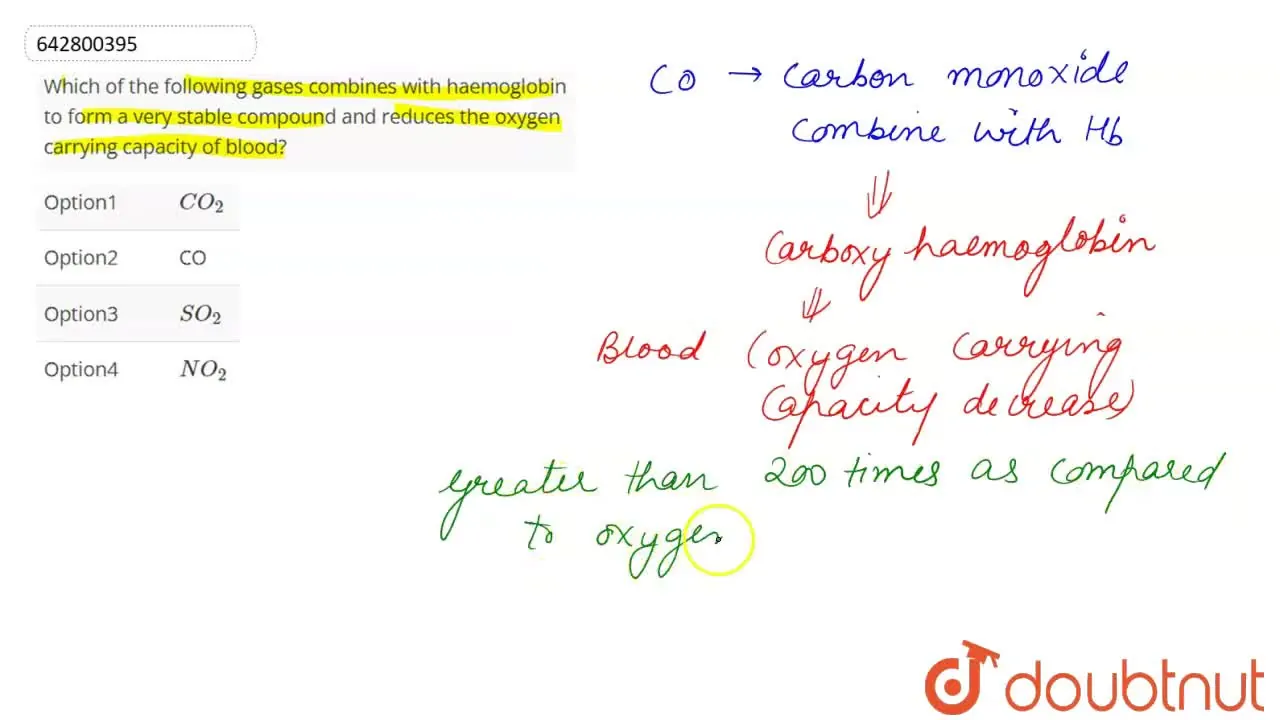Which of the following gases combines with haemoglobin to form a very stable compound and reduces the oxygen carrying capacity of blood?
CO2
CO
SO2
NO2
The correct Answer is:B
Step by step video, text & image solution for Which of the following gases combines with haemoglobin to form a very stable compound and reduces the oxygen carrying capacity of blood? by Chemistry experts to help you in doubts & scoring excellent marks in Class 12 exams.
Related Playlists
Similar Questions
Oxygen carrying capacity of blood isÂ
View SolutionWhich of the following combines with haemoglobin in blood?
View SolutionWhich gas reduces the oxygen carrying capacity of haemoglobin?
View SolutionWhich one of the following air pollutants combines with the haemoglobin of human blood and reduces its oxygen carrying capacity, leading to suffocation and may cause even death?
View SolutionWhich of the following gases reduces the oxygen carrying capacity of the blood?
View SolutionWhich of the following gases reduces the oxygen carrying capacity of the blood?
View SolutionWhich of the following gases reduces the oxygen carrying capacity of the blood?
View SolutionWhich one among the following gases readily combines with the haemoglobin of the blood?
View SolutionWhich of these gases when inhaled reduces the oxygen-carrying capacity of blood?
View SolutionWhich of these gases when inhaled reduces the oxygen-carrying capacity of blood?
View Solution


